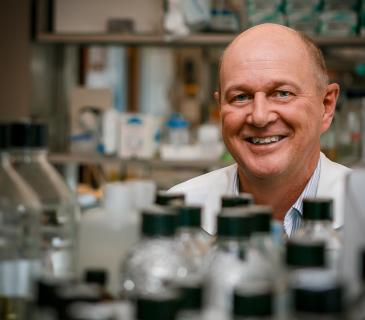Keith M. Derbyshire, Ph.D.

Mycobacterium tuberculosis is a leading cause of death by an infectious agent. It is estimated that one-third of the world’s population is infected with M. tuberculosis and that 1.6 million people die of tuberculosis every year. Its deadly synergistic association with HIV, and the appearance of MDR and XDR strains, exacerbate the global health problems associated with the disease. A comprehensive understanding of the biology of this organism is critical for the identification of novel drug targets, for the development of vaccines, and for determining how it evades the host immune system. This requires the development of basic molecular techniques to determine the genetic and biochemical basis of pathogenesis and drug resistance. To this end, the laboratory utilizes both basic molecular genetic techniques and state-of-the-art genome-wide approaches to determine the genetic architecture, expression and functions of mycobacterial genes.
The current research projects in the laboratory are:
- Distributive conjugal transfer (DCT) and genetic exchange in mycobacteria
- ESX secretion systems and their role in DCT and cell-cell communication
- Genome architecture of mycobacteria and the mechanism of leaderless gene expression
- Characterization of the mycobacterial small proteome
To learn more, please visit the Derbyshire and Gray Laboratory[1].

